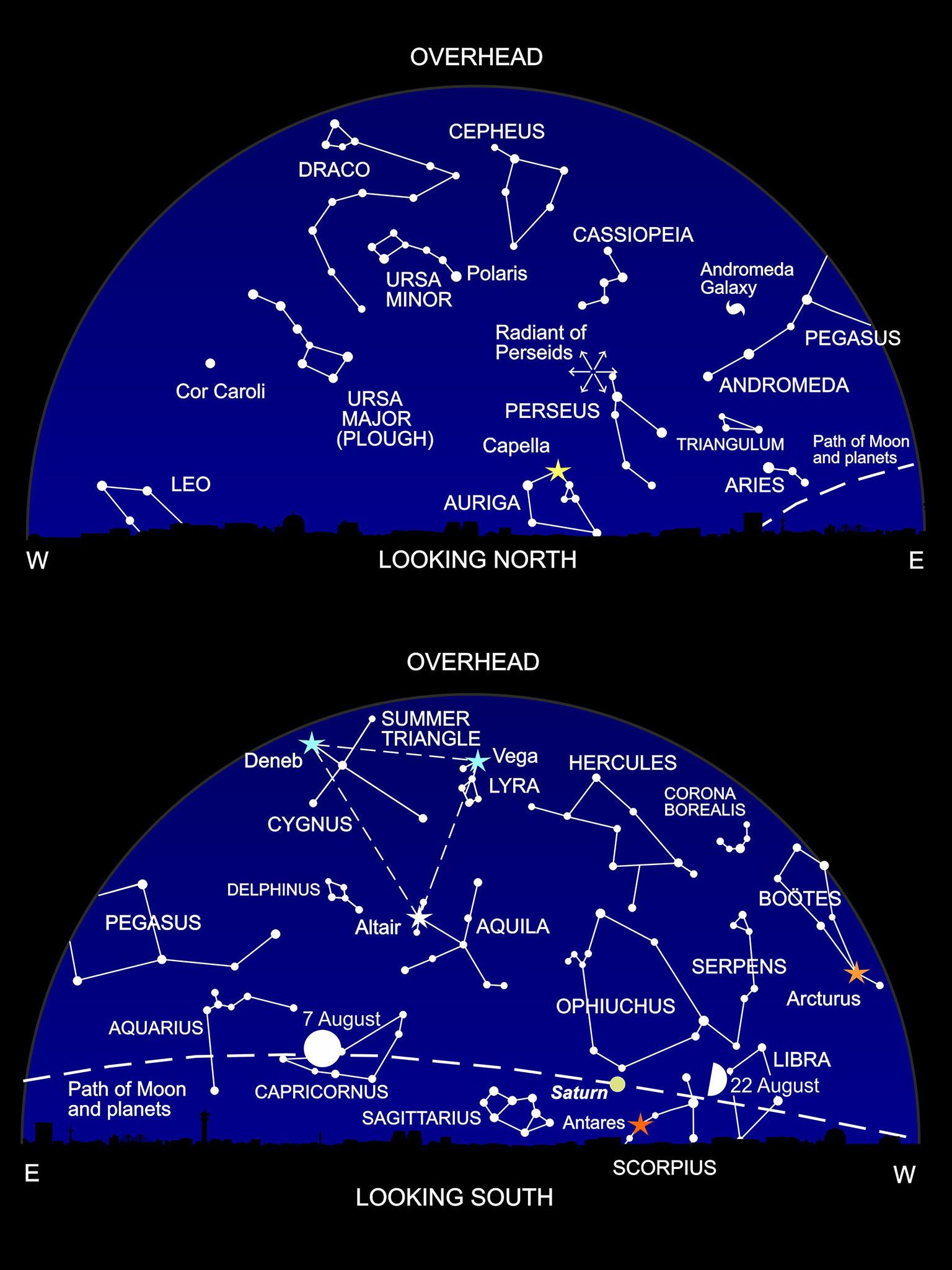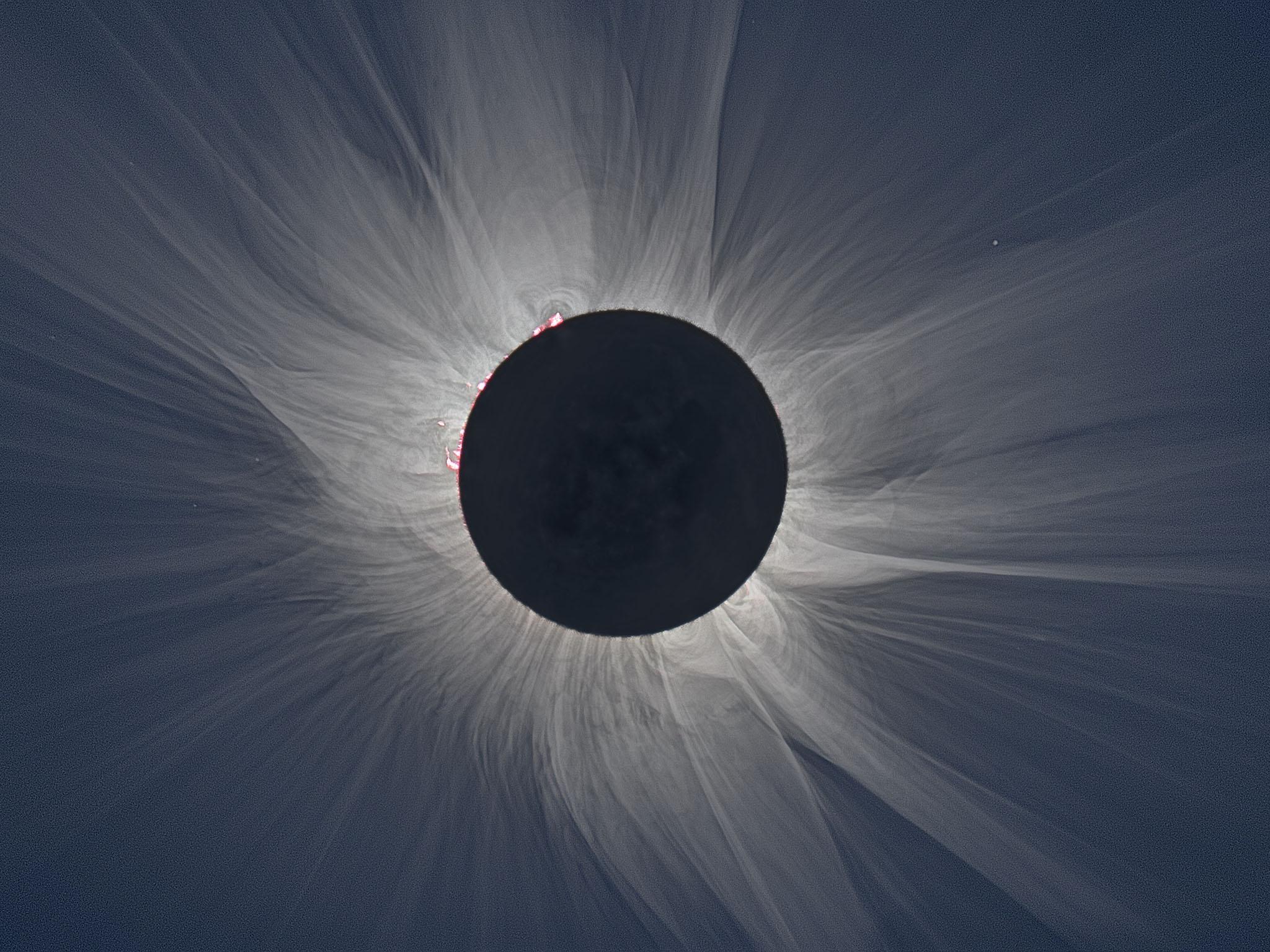Stargazing for August 2017: What to know about the total eclipse
The eclipse on Monday in the United States will be the first total eclipse in the US since 1979. If you are lucky enough to be there it's guaranteed to be a mind-blowing affair
Back by popular demand, the monthly stargazing column by Heather Couper and Nigel Henbest, which first appeared in The Independent in 1996. Both are internationally recognised astrophysicists and Fellows of the Royal Astronomical Society. Nigel is also set to become an astronaut after buying a ticket to space with Virgin Galactic
If you’re in the US on 21 August, be prepared for the experience of a lifetime. A spectacular total eclipse of the Sun will cut a swathe through the mid-United States, from Oregon to South Carolina – turning day into night. It will be the first total eclipse in the US since 1979, which was visible from Canada and north-west America.
This one will be the most talked-about for years. Already, thousands of people have signed up for star parties, glamping and generally letting down their hair. There’ll be massive TV coverage. One of us (Nigel) is leading a Virgin Galactic expedition to Idaho, which is on the eclipse track. More details at eclipse.gsfc.nasa.gov/solar.html
Nothing prepares you for a total solar eclipse. It’s one of the most awesome sights you’ll ever get to see. We’ve cached up six so far – from locations as diverse as Indonesia, Tahiti, Egypt and Hawaii. Even as experienced astronomers, we’re struck by a sense of primal terror when the eclipse takes place.
Unlike lunar eclipses, which take place when the Moon drifts into the Earth’s shadow, an eclipse of the Sun is an altogether different – and mind-blowing – affair.
It all happens because of a remarkable coincidence. By a complete chance, the Moon and the Sun appear the same size in the sky. The Moon is 400 times smaller than the Sun – but our local star is 400 times further away. So the Moon can exactly cover the Sun during a total solar eclipse.

Eclipses don’t take place on every orbit of the Moon, because of its tilted orbit. And you have to be in exactly the right place on Earth to see the crucial overlap. As a result, total solar eclipses are much rarer than eclipses of the Moon – roughly once every 400 years in any given place.
So: here’s what to prepare yourself for. If you’re not travelling to the US, check out when and where your next total eclipse is due by going to Wikipedia for their awesome list of solar eclipses (Lists_of_solar_eclipses), which stretches from 2000 BC to AD 3000!
Next: THE SAFETY WARNING. Always use eclipse goggles when you’re observing an eclipse. DO NOT USE FOGGED FILM, WELDERS GLASSES, OR ANY OPTICAL AID. Only if you’re an experienced solar observer can you use specially designed solar binoculars.
What to expect? A growing chunk out of the Sun as the Moon makes inroads across its disc. Then – as totality approaches – you’ll feel a drop in temperature; dampness; perhaps a slight wind. The light takes on an eerie, flat quality, like a film set.
All around you, animals and birds are becoming quiet: they’re preparing for sleep. At the UK’s 1999 eclipse – which we saw from Alderney – a pair of snails in flagrante delicto provided the biological entertainment. The Earth didn’t move for them.
Then, totality – GOGGLES OFF! It’s safe to look at the incredible apparition that has replaced our comforting, dependable Sun. Now there’s a grotesque dragon-mask with a gaping black mouth. Around the mask are the devastatingly beautiful tendrils of the solar corona, the Sun’s outer atmosphere, stretching into space. Stars and planets appear in the darkened sky.
And – almost as quickly as it began – the eclipse is over. A chink of light appears from a gap between the Moon’s mountains, forming a glorious ‘’diamond ring’’. GOGGLES ON!
Eclipses are incredibly brief, and they seem even briefer when you’re watching. The best you can ever expect is for a totality lasting about seven minutes. The eclipse of 21 August will only last for two minutes and 40 seconds (near Nashville, Tennessee).

The next eclipse visible from the UK? This will take place on 3 September 2081 and it will be worth a trip to the Channel Islands; and again on 23 September 2090, when you can see the eclipse from Devon and Cornwall, too. But there are plenty of other total eclipses visible from other parts of the world in the meantime. And if you catch the American eclipse, you’ll learn from experience: that eclipses are a must-see – and highly addictive!
What’s Up?
The brilliant “star” in the west after sunset is the giant planet Jupiter. Take a look through binoculars, and you can spot its four biggest moons, which dance around the planet from night to night. And grab a small telescope to see the light and dark bands girdling its distended globe. To the south, Saturn glows like a tiny yellowish lantern, next to the red star Antares. A telescope will reveal the famous rings. And, if you’re an early bird, that amazingly bright object in the morning sky is the planet Venus. Around 25 August, it lines up with the “twin stars”, Castor and Pollux, in Gemini.
Some were lucky to spot meteors 12/13 August, when the Earth ran into debris from comet Swift-Tuttle, and the incandescent dust particles lit up our skies in a shower of shooting stars, called the Perseids.
And you may catch a pale shadow of the big event of the month – the total solar eclipse visible in America: just as the Sun sets on 21 August, the Moon cuts a tiny chink out of the Sun’s lower edge as seen from across most of the UK. But do not look at the Sun directly, even though it’s low in the sky: to avoid damaging your eyes, use approved solar goggles or project the Sun’s image on to a piece of card (see https://eclipse2017.nasa.gov/safety).
Diary
21 August, 7.30pm: New Moon; total solar eclipse visible in US; partial in UK
29 August, 9.13am: Moon at First Quarter
Heather Couper and Nigel Henbest’s latest book, Philip’s 2018 Stargazing, is published this week (£6.99) [21 August]
Join our commenting forum
Join thought-provoking conversations, follow other Independent readers and see their replies
Comments
Bookmark popover
Removed from bookmarks